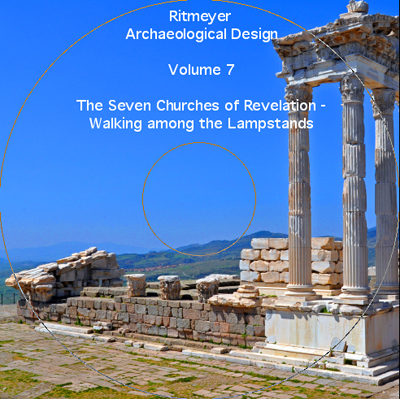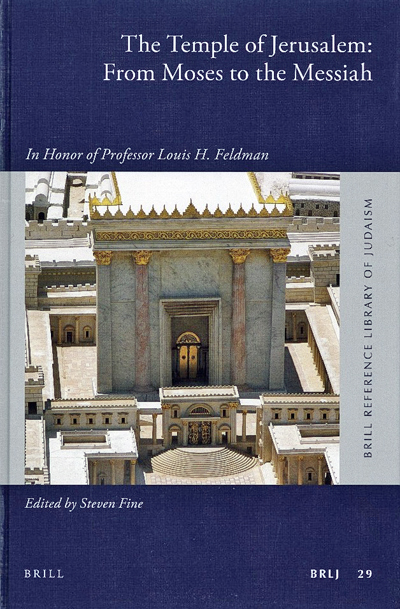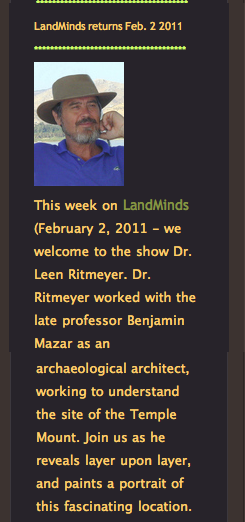If you’re in London during the next few months, you may find the following lectures interesting:
Category: Research
News of Biblical Turkey
Mark Wilson sends word from Turkey that the Spring 2011 issue of the Asia Minor Report is available. You can read it here: Asia Minor Report 11 or subscribe by contacting Mark at: markwilson@sevenchurches.org.
Of particular interest is his review of Wall Painting in Ephesos from the Hellenistic to the Byzantine Period by Norbert Zimmermann and Sabine Ladstätter, Istanbul.
Wilson’s book Biblical Turkey (see our review here) has become one of the crucial sources on the history of the area and, together with the classic works, was a tremendous help in the production of our latest CD on The Seven Churches of Revelation.
Building the Second Temple
Zeev Lewy published an interesting article about the use of stone from Solomon’s Quarries during the building of Herod’s Temple. These underground quarries are located near the Damascus Gate in Jerusalem. At the conclusion of his article he wrote:
Subsurface quarrying of building stones in biblical times which formed the Zedekiah Cave in Jerusalem while numerous quarries operated nearby on the ground is explained by geological criteria and religious aspects which also date the opening of the cave as a quarry. The peculiar qualities of this rock type in subsurface facilitated its rapid quarrying in blocks of different sizes and shapes for the grandiose construction of the Second Temple by King Herod. These could be fitted to each other on the Temple Mount without using metal tools according to the religious restrictions. The combined experience of Jewish quarrymen and Roman engineers enabled them to keep the religious spirit in this holy mission and complete the monumental construction of the Second Temple in a short time (Lewy, 2005).
Several quarries have been found in the last few years, but they were all surface quarries. There are many references in the Bible to stones and stone cutting, e.g. 1 Kings 5.17, Matthew 21.42 and 1 Peter 2.5. The mountains around Jerusalem are composed of limestone that has a characteristic layering. To quarry this limestone, the face of the stone first had to be straightened.
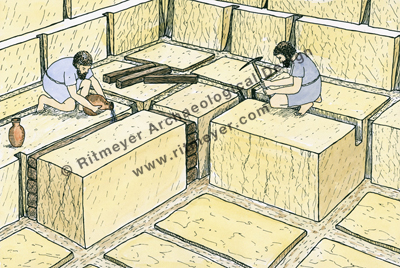
In the picture, we see the stonecutter on the right cutting 4-inch wide channels on all sides of the rock except the bottom. Another worker pours water over dry wooden logs that have been jammed into the channels. The water causes the wood to swell and the lateral pressure on the stone block makes it split away from the rock. Because the limestone lies in natural horizontal layers, the blocks would split along relatively clean horizontal lines.
HT: Bible and Interpretation
Volume on The Temple in Jerusalem in honour of Prof. Louis Feldman now out
The Temple of Jerusalem: From Moses to the Messiah: Studies in Honor of Professor Louis H. Feldman (Brill Reference Library of Judaism) [Hardcover]
On the weekend of May 11 – 12, 2008, I attended a conference at the Yeshiva University, New York, on The Temple of Jerusalem: From Moses to the Messiah. This conference was in honour of Prof. Louis Feldman, who I knew as a contributing translator of the Loeb translation of Josephus, which I use constantly. In Yeshiva University, he is revered as a brilliant scholar and mentor of generations of students – he has taught there for the last 56 years.
This conference was the inaugural gathering of the university’s Center for Israel Studies , which: “nurtures excellence in interdisciplinary scholarship and the teaching of Israel throughout history and across disciplines, with a keen focus upon the longue durée and the modern state.” Professor Steven Fine, director of the centre, organised a stimulating Programme of Lectures around an exhibition of models of the Tabernacle, Solomon’s Temple, Herod’s Temple and Herod’s Temple Mount. I was commissioned to design these models by the late Ben Adelman of Silver Spring, M.D. Mr Adelman’s estate bequeathed the models to the Yeshiva University. You can read my blog where I record the highlights of the conference here.
Last Friday, the postman brought a new book for our shelf, the volume which documents the conference – a welcome addition to our Temple section! The publisher’s blurb is as follows:
“The Temple of Jerusalem: From Moses to the Messiah brings together an interdisciplinary and broad-ranging international community of scholars to discuss aspects of the history and continued life of the Jerusalem Temple in Western culture, from biblical times to the present.”
Subjects covered in the essays range from: The Tabernacle at Sinai to the Temple Scroll, my own essay on the process of model making, the Temple in late Medieval Spanish Altarpieces, and Archaeology and the Arab-Israeli conflict.
Of particular interest to me because of my background are the essays:
“See, I Have Called by the Renowned Name of Bezalel, Son of Uri …”: Josephus’ Portrayal of the Biblical “Architect” … by Steven Fine, Yeshiva University
“Notes on the Virtual Reconstruction of the Herodian Period Temple and Courtyards” by Joshua Schwartz and Yehoshua Peleg, Bar-Ilan University
“Some Trends in Temple Studies from the Renaissance to the Enlightenment” by Matt Goldish, The Ohio State University (a masterful survey of this compelling subject)
“Avi-Yonah’s Model of Second Temple Jerusalem and the Development of Israeli Visual Culture” by Maya Balakirsky Katz, Touro College
“Jerusalem during the First and Second Temple Periods: Recent Excavations and Discoveries on and near the Temple Mount” by Ann Killebrew
Steven Fine is to be congratulated on the production of this most useful volume. The involvement of Yeshiva University students in the editing process and bringing the book to production is especially commendable.
Dr. Leen Ritmeyer interview today on the LandMinds show – update
Update:
You can listen to the interview here: http://www.israelnationalnews.com/Radio/News.aspx/2869
From Joe Lauer:
Barnea Levi Selavan informs us that the 5:30 pm (10:30 am NY time) second segment of today’s LandMinds show will feature an interview with Dr. Leen Ritmeyer, who is well-known for his work regarding the structures, features and dimensions of the Temple Mount.The LandMinds show, with Barnea and David Willner, is broadcast live from 5 to 7 pm Israel time (10 am-12 Noon in New York) on Israel National Radio www.israelnationalradio.com and its broadcasts can also be heard afterwards at that site (archived athttp://www.israelnationalnews.com/Radio/Author.aspx/3408) and at the Foundation Stone site, seehttp://www.foundationstone.org/LandMinds10/page49.htmlDr. Ritmeyer’s website, which features his comments, photographs, and beautiful detailed drawings and diagrams, is athttps://www.ritmeyer.com/I hope that during the course of the interview Dr. Ritmeyer will explain how he derived the dimensions of the Temple Mount at the time of the First Temple as well as the length of the amah/cubit used in its measurement to be the Royal Cubit of 20.67 inches (about 52.5 cm), as opposed to other cubits mentioned in the literature, including longer amot mentioned in the halachic literature, and why the 500 amot/cubits measurements refer to the smaller area of the First Temple period, as opposed to the larger Second Temple Herodian platform.
Epigraphy and Daily Life – Conference in Memory of Hanan Eshel
From the Agade list:
“See, I will bring a scroll recounting what befell me” (Ps 40:8)
The Second International Conference of the Jeselsohn Epigraphic Center
of Jewish History, Epigraphy and Daily Life – From the Bible to the Talmud,
is dedicated to the memory of Professor Hanan Eshel, who sadly died on 8 April of this year at the age of 52, and will take place on Sunday, 2 January, 2011, The Nanotechnology Building (no. 206), Bar-Ilan University. Here is the program:
09:15 – 09:45 Reception
09:45 – 10:30 GreetingsChair: Dr. Esther Eshel, Acting Head of the Jeselsohn Center,
Bar-Ilan UniversityProf. Moshe Kaveh, President, Bar-Ilan University
Prof. Eliezer Tauber, Dean of the Faculty of Jewish Studies, Bar-Ilan UniversityProf. Avraham Faust, Chair, The Martin (Szusz) Department of Land of
Israel Studies and Archeology, Bar-Ilan University10:30 – 12:00 Session 1: The First Temple Period
Chair: Dr. Ze’ev Meshel, Tel-Aviv UniversityProf. Shmuel Ahituv, Ben-Gurion University of the Negev
The Kuntillet Ajrud Inscriptions: Language and ReligionProf. Amihai Mazar, The Hebrew University of Jerusalem
Comments on 10-9th Centuries BCE Inscriptions from the Land of Israel
and their ResearchProf. Aaron Demsky, Bar-Ilan University
Researching Literacy in Ancient Israel – Recent Approaches12:00 – 13:00 Lunch
13:00 – 14:30 Session 2: The Second Temple Period
Chair: Prof. Amos Kloner, Bar-Ilan UniversityProf. Lester L. Grabbe (University of Hull, UK)
Scribes, Writing, and Epigraphy in the Second Temple PeriodDr. Ada Yardeni, The Hebrew University of Jerusalem
The Unprovenanced Aramaic Ostraca from IdumeaProf. Uriel Rappaport, University of Haifa
Historical Aspects of the Jewish Coin Inscriptions14:30 – 15:00 Coffee Break
15:00 – 16:30 Session 3: The Mishnaic and Talmudic Periods
Chair: Prof. Albert Baumgarten, Bar-Ilan UniversityDr. Uzi Leibner, The Hebrew University of Jerusalem
Inscriptions from the Synagogue of Khirbet Wadi HamamDr. David Amit, Israel Antiquities Authority
Jewish Stamps for Bread, Wine and Olive OilProf. Gideon Bohak, Tel-Aviv University
Amulets in the Daily Lives of Jews in Antiquity16:30 – 17:15 Coffee Break
17:15 – 18:15 Special Session in Memory of Hanan Eshel
Chair: Dr. David Jeselsohn, Founder of the Jeselsohn Epigraphic Center
of Jewish HistoryProf. Lawrence H. Schiffman, New York University
Hanan Eshel’s Contribution to the Study of the Dead Sea Scrolls
Middle Bronze Age Study Group meeting
If you are in Israel and interested in the Middle Bronze Age, you wouldn’t want to miss this conference:
Below is the program for the upcoming Middle Bronze Age Study Group,
which will be held on December 23rd, 2010, at the University of Haifa.
We, the organizers, would love to see you at the meeting.The Middle Bronze Age Study Group
The 2010 WorkshopPatrician and Palatial:
The Middle Bronze Age Sites of Tel Ifshar and Tel Kabri”Thursday, December 23rd, 2010
Leon Recanati Institute of Maritime Studies
University of Haifa, Multi-purpose Building, Room 108
(Lectures will be in English)9:00 – Gathering
9:30-9:40 – Dr. Yaacov Kahanov, Director, Recanati Institute of
Maritime Studies: GreetingsLecture Session: 9:30 – 12:00
Chair: Prof. Aren Maeir
9:40-10:20 – Dr. Ezra Marcus and Dr. Yosef Porath: The Middle Bronze
Age IIa sequence of Tel Ifshar and its relative and absolute
chronology.
10:20-11:00 – Dr. Assaf Yasur-Landau and Prof. Eric H. Cline: The
Middle Bronze Age I (IIa) and II (IIb) palace at Tel Kabri
11:00-11:20 – Prof. Manfred Bietak: Respondent
11:20-12:00 – Discussion12:00-13:00 – Lunch break
Pottery Session: 13:00 – 15:00
Tel Ifshar: Dr. Ezra Marcus
Tel Kabri: Ms. Inbal Samet
Tel Esur/el-Assawir: Dr. Shai Bar and Assaf Bar-HadasIn order to provide ample room to accommodate all those attending for
the morning session, the organizers kindly request that you RSVP,
including car plate number (if you wish to park within the Haifa
campus) by December 15 to either assafyasur@hotmail.com or
ezra@research.haifa.ac.il.David Ilan, Aren Maeir, Ezra Marcus, Joe Uziel and Assaf Yasur-Landau
Organizing Committee
HT: Jack Sasson
More on Solomon’s Mines
This report was in the San Diego news a couple of days ago:
Thomas Levy, a UCSD professor of anthropology and Judaic studies, has
pioneered three highly sophisticated digging excavations in an area
called Khirbat en-Nahas, located in southern Jordan, attracting the
attention of NOVA/National Geographic Television, which sent a crew to
Jordan with him last fall.Levy, also the associate director of the Center of Interdisciplinary
Science for Art, Architecture and Archaeology (CISA3), wasn’t looking
for King Solomon’s mines at first. He was actually researching the
role of ancient technology on the evolution of society. But what he
found in Jordan was groundbreaking — thousands of tons of slag, a
by-product of smelting ore, and different types of blowpipes. Using
the process of radiocarbon dating, his team discovered there was
industrial-scale metal production of copper precisely in 10th century
BC.
“It would have been like the Pittsburg of Palestine,” said Levy.There are two sides to the King Solomon debate, he said. First, there
are those who “minimize the historicity of the Old Testament, saying
there was no Solomon because during the 10th century there were no
societies capable of creating a kingdom, only petty nomads.” On the
other side, there are those who maximize the content of the Old
Testament, he said.“We don’t have proof that we have found Solomon’s mines, but what we
have proof of is that there were kingdoms in the 10th century,” said
Levy. “I think he existed.”
You can see a preview of the movie here:
HT: Jack Sasson
Update: The “Quest for Solomon’s Mines” is being streamed (53 minutes) at PBS, but in the UK you can’t see it, for a message says: “We’re sorry, but this video is not available in your region due to rights restrictions.” Sad …
The Oxford Handbook of Jewish Daily Life in Roman Palestine
This must be required reading:
The Oxford Handbook of Jewish Daily Life in Roman Palestine
Edited by Catherine Hezser
Written by an international and interdisciplinary team of
distinguished scholars, The Oxford Handbook of Jewish Daily Life in
Roman Palestine is an indispensable reference compendium on the
day-to-day lives of Jews in the land of Israel in Roman times. Ranging
from subjects such as clothing and domestic architecture to food and
meals, labour and trade, and leisure time activities, the volume
covers all the major themes in an encompassing yet easily accessible
way. Individual chapters introduce the reader to the current state of
research on particular aspects of ancient Jewish everyday life –
research which has been greatly enriched by critical methodological
approaches to rabbinic texts, and by the growing interest of
archaeologists in investigating the lives of ordinary people. Detailed
bibliographies inspire further engagement by enabling readers to
pursue their own lines of enquiry.The Handbook will prove to be an
invaluable reference work and tool for all students and scholars of
ancient Judaism, rabbinic literature, Roman provincial history and
culture, and of ancient Christianity.
Features* Interdisciplinary approach presents the most up-to-date
perspectives on the study of ancient Jewish daily life
* An indispensable reference tool for all students and scholars of
ancient Judaism, Roman provincial history and culture, and early
Christianity
* Written by a team of internationally renowned scholars
* Extensive bibliographies help to orientate future research projects
* Part of the prestigious Oxford Handbooks seriesAbout the Author(s)
Catherine Hezser is Professor of Jewish Studies at the School of
Oriental and African Studies, University of London
HT: Jack Sasson
Recommended: The Online Catalogue of the École Biblique in Jerusalem
Tom Powers, an American citizen living in Jerusalem, runs a lively blog, called View from Jerusalem. Whilst perusing our post Lost in Words – Recommendations from our library, he decided to pass on information about the On-line Catalogue of Jerusalem’s École Biblique, which went online about two years ago.
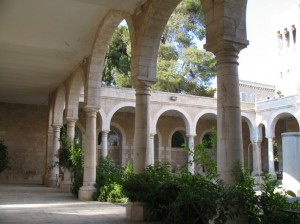
Here is an excerpt from Tom’s interesting post:
From the very beginning (ca. 1890), the Dominicans here made a point of indexing their collection on the level of the individual articles contained in journals, periodicals and books. Thanks to their foresight and diligence, that means that someone today can sit at their computer — wherever in the world – and do a search of the catalog by keyword, author, or any number of other parameters, and pull up the reference data on a whole host of relevant articles (and books), materials that they might then have access to in their own institutional library or via internet resources such as JSTOR.
About the École’s Library:
More than 140,000 volumes and 400 specialized periodicals are available for ready consultation. The great majority of this material concerns biblical exegesis, the archeology and literature of the Near East, ancient languages, etc.
Knowing the rich collection of this library, we agree that the online catalogue will be an extremely useful tool for anyone who wants to dig deeper into the Archaeology of the Holy Land and the Near East.

